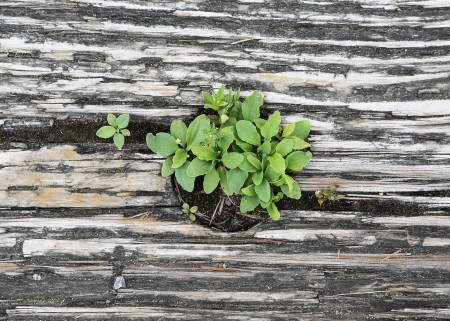Visitor #1 (exiting a recreated 1700’s log house at an open air site): “I wouldn’t have wanted to live back then: no air conditioning.”
Visitor #2: “They didn’t need it: There wasn’t all this asphalt to heat things up.”
As an historian and environmentalist I struggled over whether this conversation was a nightmare or a dream come true. I quickly settled on dream come true–it was the first concrete evidence I had of visitor-initiated discussions on environmental sustainability at a history museum, and it was at an historic house no less.
The zoos, aquariums, gardens, science centers and natural history museums have obvious ties to the science and nature themes of environmental sustainability. Many assume historic houses have no ties, yet a great deal of sustainability talk these days is about how people can change their behavior.
We know that historic houses have the best people stories. Those stories connect deeply with our visitors. When visitors are with us they think about how it would have been to live so differently in another time and place. Many are also thinking about how they can live differently to reduce their impact on the environment. It is a perfect teaching moment.
If I’d been an interpreter overhearing air conditioning conversation, in character or not, I’d have jumped at the chance to invite the visitors to sit with me on the porch or in the dogtrot, rock a bit, fan themselves, and maybe have a glass of water or lemonade. We’d have a conversation about how well-placed deciduous trees, carefully-oriented houses, and the structure of the building could all contribute to a more comfortable living temperature. If I weren’t in character, then I’d add that, given a chance, our bodies adjust to a much wider range of temperature than our 21st century thermostat habits encourage. And then I’d explain that they are right about the asphalt contributing to rising temperatures, but that other changes have made a much, much bigger difference . . . .
 We know that effective education requires meeting the visitor where they are in their learning curve, then allowing them to learn more. How awesome it is to meet them at “home”, in a familiar space, with familiar practices, where they can make comparisons between opportunities and choices, struggles and change. And where they can see that others have been there too.
We know that effective education requires meeting the visitor where they are in their learning curve, then allowing them to learn more. How awesome it is to meet them at “home”, in a familiar space, with familiar practices, where they can make comparisons between opportunities and choices, struggles and change. And where they can see that others have been there too.
Unless they inquire, they don’t have to know that you’re testing out chimney pillows to cut back on heat loss, or that next week you’re having a blower door test done on your oldest structure. You may have skillfully replaced incandescent flame bulbs with the LED versions, and recently stopped fertilizing the lawn and parking area. That’s all good work to save energy and money within preservation principles–work you should be doing. Tell your members, your board, and your community about those. And keep expanding that work by scheduling upgrades and changes as part of your property planning. While you’re at it, think strategically about how more frequent, stronger, weather events will affect your structures and institutions in the long run–and revamp your disaster planning.
For now, enjoy that moment on the porch with your visitor, and learn all you can about their thoughts on climate change and environmental sustainability. What they are thinking is part of a national discussion, and a change in the country’s way of life. This is a gift to our field’s social relevancy campaign. We want to protect and share our historic sites for centuries. One way to do that is to help our visitors and communities understand what we have to offer about living differently.
_________
Sarah Sutton leads Sustainable Museums, a consultancy helping the staff and leadership of cultural and natural resource organizations plan for a more sustainable future. She is the author of Environmental Sustainability at Historic Sites and Museums, and The Green Nonprofit: The First 52 Weeks of Your Green Journey. She is co-author with Elizabeth Wylie of both editions of The Green Museum: A Primer on Environmental Sustainability.






